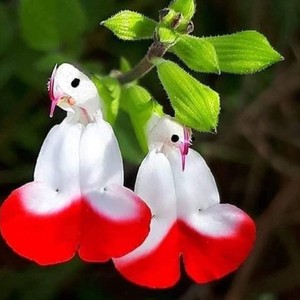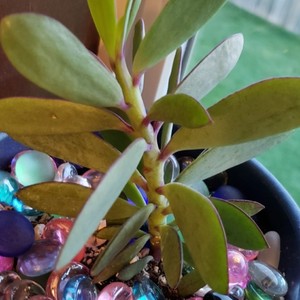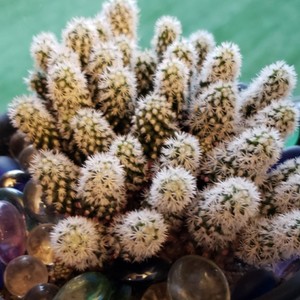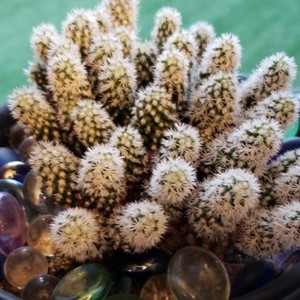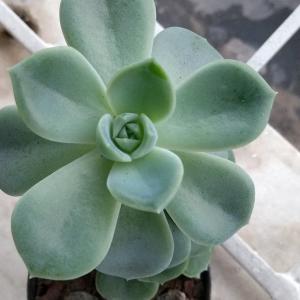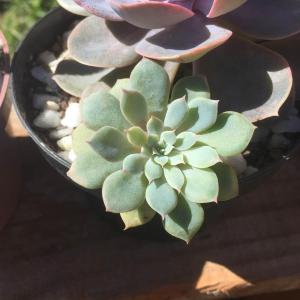求助
Catarina ZS
2018年11月19日

I'd like to know its identification.
What's the name?

What's the name?

0
0
Catarina ZS:It is really similar! Thank you :-)
林有鹿鸣:Sedum alice evans?
求助
froggy
2018年08月22日
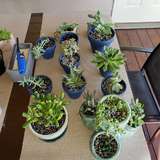
Identification?
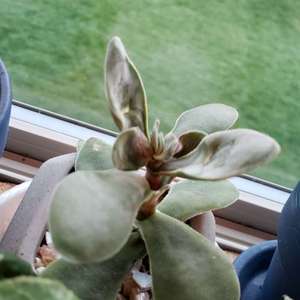
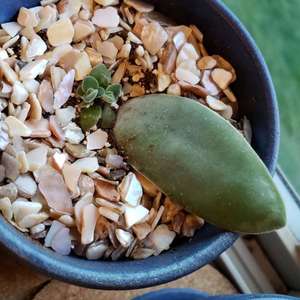


0
0
Simplysucculent:I think some kind of jade but I’m not sure
求助
CarlosB2408
2018年06月14日

Need help! Does anyone know what type of succulent this is? Thank you!!😁 #identification
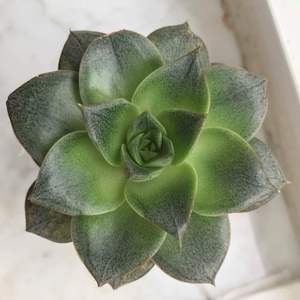

0
0
Fion:Echeveria purpsorum(大和锦)😁
求助
Catarina ZS
2018年06月07日

Does somebody know the identification of these succulent?
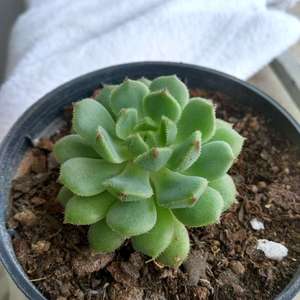
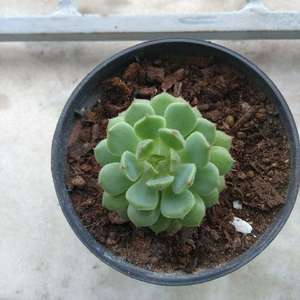


0
0
Catarina ZS:Thank you. Now I think it as an Echeveria Dondo :-)
CiaraCrearions:Not super helpful but it does look like some kind of Echeveria!
求助
chingleng/otter
2017年12月24日

anyone can identify these succulents?
#succulent #identification


#succulent #identification


0
1
Sookie:The one on the right in the picture with 4 succulents looks like Tigers Jaw.
文章
Miss Chen
2017年12月10日

Mushroom hunters forge through damp wooded areas searching for the prized edible mushroom. They must be skilled in the identification process, because some mushrooms are deadly. There are over 3,000 species of mushroom throughout the world. It is a fungus, and unlike other plants, has no chlorophyll to help it manufacture food. The cap of the mushroom--the part we typically eat--is actually the fruiting part of the mushroom, and is vital to its reproduction process. The cap will last only a few days, but during that time it will create millions of spores. Spores are single cells, each capable of developing into a mushroom.
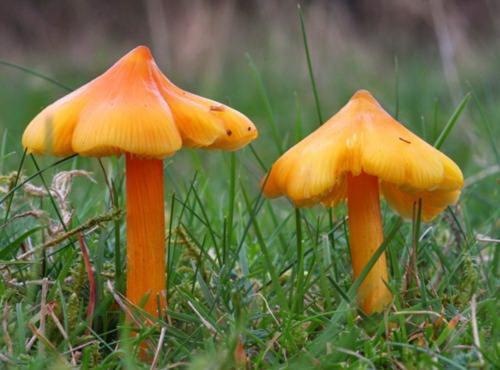
Cells Produce Spores
The cells that produce spores on the fruiting body are either asci or basidia. With asci cells, spores are produced internally, and in the basidia they are produced externally. Spores are released when either the tip of the asci breaks off or the spores break off from the basidia. After the spores are released, they are carried by the wind, and it is possible for them to land far from the parent mushroom. After the spores are released, the cap or fruiting part of the mushroom dies.
Asci and Basidia Cells
The asci cells are located on the internal surface of the cup fungi. When the asci breaks open, the spores are released. Gilled mushrooms, boletes and puffballs all have basidia cells. In the gilled mushrooms, they are located on the bottom of the cap, from which the spores are dropped. In the boletes, they are located in tubes contained in the flesh of the mushroom cap, with pores that release the spores. In the puffball, they are located in the body of the cap, and the spores release when the shell of the cap breaks open.

The Cycle Continues
For a spore to survive and grow into a new mushroom, it must land in an environment that is appropriate for mushroom cultivation. The soil should be damp and moist. Mushrooms thrive in areas that are grassy and wooded. After landing in such an environment, the spore will grow hair-like filaments that are called hypha. From the hyphae, the mushroom's mycelium will grow. This is the part of the mushroom that grows below the soil. From the mycelium a stalk or stem will grow, and atop the stem will grow the fruiting cap. When the hypha of one spore meets with the hypha from another spore, a mating or germination process begins that results in the production of more spores.

Cells Produce Spores
The cells that produce spores on the fruiting body are either asci or basidia. With asci cells, spores are produced internally, and in the basidia they are produced externally. Spores are released when either the tip of the asci breaks off or the spores break off from the basidia. After the spores are released, they are carried by the wind, and it is possible for them to land far from the parent mushroom. After the spores are released, the cap or fruiting part of the mushroom dies.
Asci and Basidia Cells
The asci cells are located on the internal surface of the cup fungi. When the asci breaks open, the spores are released. Gilled mushrooms, boletes and puffballs all have basidia cells. In the gilled mushrooms, they are located on the bottom of the cap, from which the spores are dropped. In the boletes, they are located in tubes contained in the flesh of the mushroom cap, with pores that release the spores. In the puffball, they are located in the body of the cap, and the spores release when the shell of the cap breaks open.

The Cycle Continues
For a spore to survive and grow into a new mushroom, it must land in an environment that is appropriate for mushroom cultivation. The soil should be damp and moist. Mushrooms thrive in areas that are grassy and wooded. After landing in such an environment, the spore will grow hair-like filaments that are called hypha. From the hyphae, the mushroom's mycelium will grow. This is the part of the mushroom that grows below the soil. From the mycelium a stalk or stem will grow, and atop the stem will grow the fruiting cap. When the hypha of one spore meets with the hypha from another spore, a mating or germination process begins that results in the production of more spores.
0
0
文章
Miss Chen
2017年11月30日

Whether hunting for mushrooms in Virginia or elsewhere, take along a field guide for mushroom identification. Forests in Virginia offer cool, moist environments that produce mushrooms such as morels, chanterelles and oyster mushrooms, all of which are easy to identify.

Morels
Morel mushrooms are prized for their flavor and are first to appear in springtime.
Morels appear at the beginning of mushroom season in April and continue to be found through May. They produce a laced and pitted cap and the mushrooms are 3 to 5 inches tall. Morels can be colored yellow, black and gray.
Chanterelles
Chanterelles are distinctive yellow-orange to orange colored mushrooms that grow in clumps in rich moist forest soil. They are distinguished by a ruffled fan shape in an upright position and grow in clumps weighing up to 3 pounds. Chanterelles look like no other mushroom so they are one of the easier ones to identify in late summer or early fall.
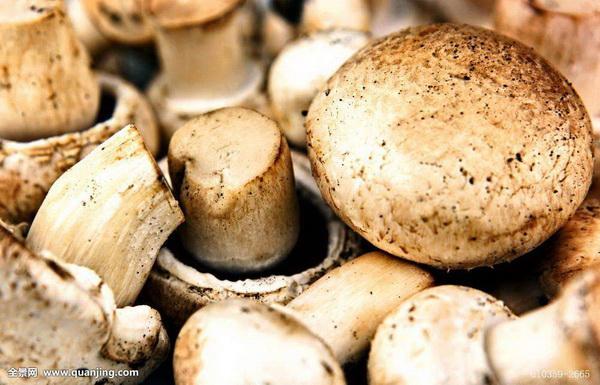
Oyster
Oyster mushrooms have flattened caps with gills on the underside.
Oyster mushrooms grow from April to November and favor willow trees, although they can be found growing on poplar, oak and other deciduous tree trunks that have fallen and are in decay. Shaped like a half moon with gills, they appear in colors of brown, white and gray.

Morels
Morel mushrooms are prized for their flavor and are first to appear in springtime.
Morels appear at the beginning of mushroom season in April and continue to be found through May. They produce a laced and pitted cap and the mushrooms are 3 to 5 inches tall. Morels can be colored yellow, black and gray.
Chanterelles
Chanterelles are distinctive yellow-orange to orange colored mushrooms that grow in clumps in rich moist forest soil. They are distinguished by a ruffled fan shape in an upright position and grow in clumps weighing up to 3 pounds. Chanterelles look like no other mushroom so they are one of the easier ones to identify in late summer or early fall.

Oyster
Oyster mushrooms have flattened caps with gills on the underside.
Oyster mushrooms grow from April to November and favor willow trees, although they can be found growing on poplar, oak and other deciduous tree trunks that have fallen and are in decay. Shaped like a half moon with gills, they appear in colors of brown, white and gray.
0
0
求助
Viol
2017年10月31日

Questioning what this is! Anyone got an idea? #identification
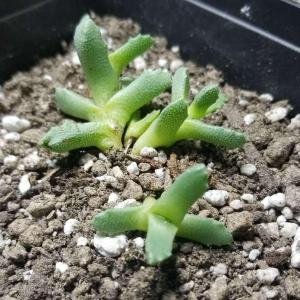

0
0
Ueca:Try looking into Cheiridopsis, Aloinopsis, or Rhinephyllum.
Ueca:A good place to start is the Aizoaceae family, known as "mesemb plants".
Unfortunately there are innumerable species.


